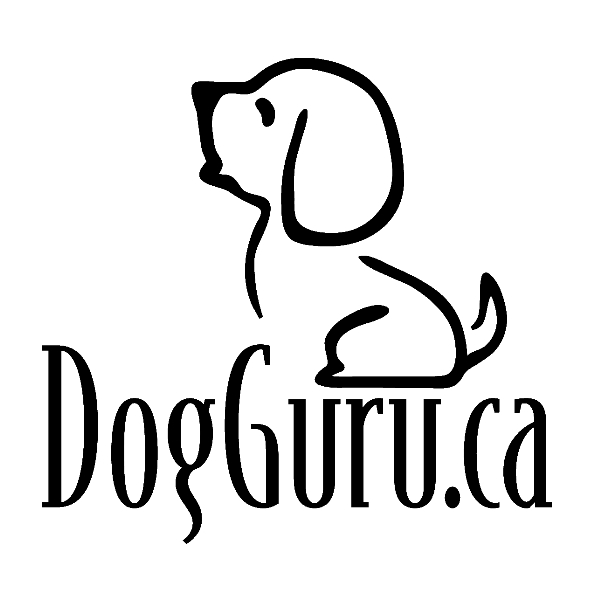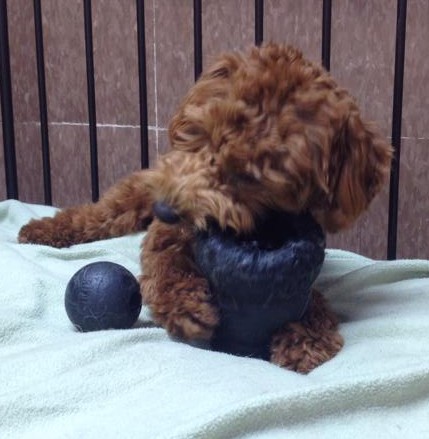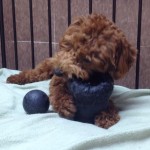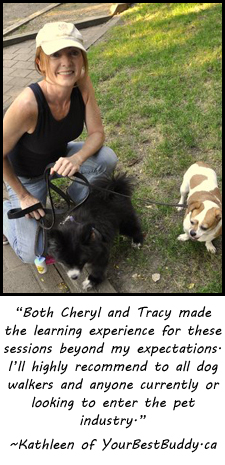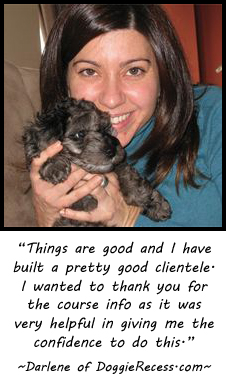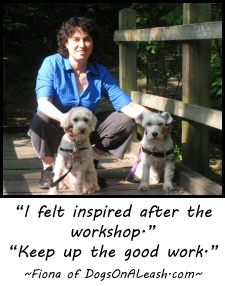Bringing a new puppy home is such an exciting time!
Everyone is giddy, and there are SO many seemingly important decisions to make:
What will we name him or her?
Where will they sleep?
What supplies do I need to buy?
In this post, I will help you make everything easier, by providing you a “What to Get” checklist.
There are some very important, as Dr. Ian Dunbar calls them, “Developmental Deadlines” you MUST meet in order to have a puppy reach his full potential.
Along with these deadlines are some ‘tools’ that you will need to pick up, ideally BEFORE you bring your puppy home, so you are set up and ready to go.
- A short-term confinement crate — this needs to be only large enough for puppy to stand up, turn around and lay down again… NOT big enough for them to walk over to another corner. This will be used to help you to better predict when your puppy needs to relieve themself, so you can take them where they need to go, and praise them for doing so.
- A long-term confinement area = a gated laundry room, or an X-pen to allow for a rectangular shaped enclosure, where short-term confinement crate will be at one end (left open) and potty area at the other end.
- A potty area — First you must start with a typical boot tray, such as shown herem or a shallow cat litter box.
- Then you MUST cover it with the SAME surface / substrate that you wish for your puppy to learn to relieve themselves on. For example, if you wish for them to learn to go on grass, then place a piece of sod / rolled grass on it. If you will want them to relieve themselves on pea gravel, or sand, then that is what you need to put on the tray. I strongly suggest AGAINST pee pads or newspaper, since those are not surfaces found outside, unless you plan to always offer that to your dog for their entire life.
- Chew toys that can be ‘stuffed’ — such as kongs, biscuit balls, squirrel dude, kong genius, and at least one with a rope attached to it, like the aqua kong. Be sure to pick up 5 or 6 of these!
- Natural (not cooked) long bones can also be very useful, as when the marrow is chewed out of them, you can then stuff them as you would the toys.
- Water bowl — non-skid, metal — will save on messes, easier to clean, and doesn’t leech plastic chemicals into their water (food bowl NOT needed until later in training)
- Good quality kibble (the best you can afford, ideally using our Top 3 Guidelines for Choosing Pet Food — 1) No by-products 2) First ingredient is an identifiable meat, NOT the word meat or poultry 3) Avoid cereal grains such as corn and wheat)
- Freeze dried liver or chicken treats (for conditioning to LOVE men, children, strangers and anything they may be afraid of, and for housetraining — not to be given for non-training reasons)
- Martingale, or similar collar (that they can’t slip out of) and a 6 foot long leash (no retractable ones)
- Books, DVDs (to help with preventing problems and for training help)
To download the 2 FREE ebooks entitled: BEFORE You Get Your Puppy & AFTER You Get Your Puppy, courtesy of Cheryl the DogGuru and Dr. Ian Dunbar, simply fill in the form below:
- Finally… you will want to hire yourself a reputable, experienced Puppy Trainer to help guide and coach you during these crucial first steps.
Remember, you are setting your puppy up for success… everything you do now, will have a HUGE impact on how well-behaved your dog will be later in life.
Why fix problems later, when you can prevent them in the first place!
- If you are in the Toronto, Canada area, I can come out to work with you in your home, OR I can work with you from anywhere in the world, if we meet via Skype. Email me or call 1-647-428-3819… I’d love to help! You can even book your own appointment with me, by following this link.
- If you prefer, you could also search at www.apdt.com to find a trainer in your area.
